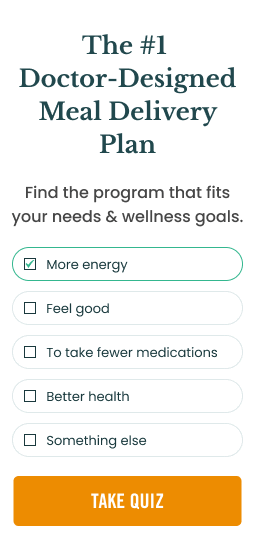
National Nutrition Month®, a campaign created decades ago, now intrigues experts and eaters alike. For 2023, the Academy of Nutrition and Dietetics has a modern theme, “Fuel for the Future.” In essence, this year’s theme promotes sustainable habits and sustainable food choices, making good nutrition the obvious choice for both people and the planet.
Ahead, learn ways to personalize your National Nutrition Month® 2023, including ideas for how to celebrate National Nutrition Month®.
What Is National Nutrition Month® 2023?
National Nutrition Month® is a nutrition education and information campaign, celebrated every year in the month of March. Created by the Academy of Nutrition and Dietetics in 1973, the campaign is celebrating its 50th anniversary this year.
Although decades have passed since its inception, the campaign still aims for the same goal. Each year, everyone is invited to make informed food choices and develop healthy eating and physical activity habits.
Each year also comes with a special theme to help focus the efforts. For 2023, the National Nutrition Month® theme is “Fuel for the Future.” Emphasis will be given this year to making more sustainable food choices and developing healthy, sustainable habits during each phase of life.
How to Celebrate National Nutrition Month this Year
Celebrate National Nutrition Month® with these five fun ideas! Since there are five weeks in March 2023, you can focus on one idea for each work as you move forward toward your goals.
1. Pledge to Protect the Environment
When inviting you to protect the environment, the Academy of Nutrition and Dietetics isn’t asking you to take a political stance. Instead, the Academy recognizes that sustainable food and nutrition practices help protect the same land that supplies nourishment to people all over the world.
Eating with the environment and yourself in mind aren’t mutually exclusive. In other words, you can make food choices that benefit both your health and the health of the planet.
Don’t know where to start? The Academy suggests the following steps forward:
• Engage in food recovery options
• Get into composting
• Grow food at home (i.e. containers, community, or school gardens)
• Invest in low-waste, reusable food storage containers
• Investigate food packaging and recycling options in your area
• Learn about food science and production
• More meatless meals
• More plant-based meals
• Participate in a school field trip to visit a farm
• Purchase products with minimal packaging (when possible)
• Search for resources on how to reduce food waste
• Shop in-season options and local (when possible)
2. Decide to Meet with a Dietitian
Sifting through nutrition information can feel intimidating and overwhelming at times. Luckily, trained and qualified professionals called dietitians are here to help.
Dietitians can support you in making more informed food choices and developing sound eating and physical activity habits. Additionally, dietitians can work within your healthcare team to stress the importance of making informed nutrition decisions for you as an individual. In other words, dietitians can help make healthy eating more personal by customizing and individualizing a meal plan, just for you.
During the month of March, you can commit to making nutrition a more prevalent part of your healthcare plan. Here are a few ways to do so:
• Ask your doctor for a referral to a dietitian
• Find a nutrition expert specializing in your specific condition such as diabetes
• Learn about how nutrient needs change in different life stages like pregnancy
There are also plenty of ways to incorporate a dietitian's advice at home. To increase the amount of accurate nutrition information you receive on a daily basis, consider the following activities:
• Attend a virtual cooking demo or nutrition event
• Ask your library about nutrition books for kids
• Follow more dietitians on social media
• Go on an in-person or guided grocery store tour with a dietitian
• Learn one tip each day from a dietitian
• Look for dietitian-designed recipes or handouts online
• Put label-reading tips into practice
• Read a book authored by a dietitian
• Use MyPlate resources as a guide for healthy eating
3. Search for Accessible and Affordable Options
Unfortunately, many people believe the myth that healthy eating is expensive. Eating locally grown food that is in season can actually be cheaper, and the items are more likely to be at their nutritional peak.
While it may take some adjustment and practice, meal planning can become an enjoyable task. You can seek out affordable and readily available options by:
• Considering canned, dried, or frozen varieties of food
• Exploring your pantry for options before going to the store
• Planning meals around what is on sale at the store
• Seeing if you qualify for assistance programs (i.e. SNAP, WIC, food banks)
• Selecting local produce or in-season items
• Shopping for featured, on-sale items
• Using a grocery list to guide your shopping
• Utilizing leftovers in creative ways (instead of throwing them away)
Keep in mind that inviting family members or friends to share in meal planning responsibilities can make the process seem less overwhelming. For example, one family member could be in charge of picking out different recipes and another family member could take charge of the grocery list.
4. Move Past Fads & Choose a Variety of Fuel
It’s easy to get caught up in the latest fad diet, but all too often these eating patterns limit necessary nutrients. Plus, sticking to the same foods each day means you're less likely to get the vitamins, minerals, and other nutrients you need.
On the other hand, eating a variety of foods can expand your horizons. For example, cooking foods from other cultures and cuisines can help you see basic ingredients in a new and exciting way.
A helpful tactic for some folks is to “eat the rainbow.” In essence, this means filling your plate with as many different colors of foods as possible. This is a simple technique that can help you build a nourishing plate with different foods, each containing a unique profile of nutrients.
To avoid disordered eating patterns, you can also choose to focus on more mindful eating practices. For example, appreciate your body for performing its daily functions by choosing to fuel it with nutrient-rich foods. If you’re having trouble feeling gratitude for your body, meeting with a dietitian may help you reframe your thoughts.
5. Include Friends & Family (Especially at Home)
Engaging in healthful eating and physical activity practices can be much more fun on the buddy system. In other words, partnering with friends or family can help keep you accountable to your goals. In fact, a recent study linked more frequent family meals with improved eating patterns.
Making more meals at home can also keep you in control of what is going into your body. Consider the following tips:
• Find a meal preparation system that works for your family
• Learn a new cooking skill or technique
• Make enough of a meal to have leftovers
• Prioritize family dinners when scheduling weekly activities
When you’re not at home, you can also make healthful choices. For example, you can connect with a colleague over a daily walk. Rather than going it alone, chances are one of your coworkers is also looking for a regular exercise class or physical activity to participate in (and would enjoy your company).
Whether at home or at work, you can look for group wellness challenges to participate in. Host a healthy eating potluck with your neighbors, or a healthy recipe contest to get others in your community involved.
The Final Word on National Nutrition Month®: Fuel for the Future
Fueling for the future starts with making sustainable choices today. Endeavoring to eat better may seem overwhelming at first, but can be made easier by working with a dietitian or involving friends, family, and members of your community.
From asking about resources in your area to learning about what nutrients you need in your current life stage, there are a plethora of ways to personalize your healthy eating journey.
References:
Academy of Nutrition and Dietetics. National Nutrition Month®. Eatright.org. Accessed 2023.
Klemm S, Kohn J. 50 Ideas to Get Involved in National Nutrition Month®. Eatright.org. Published February 2023.







